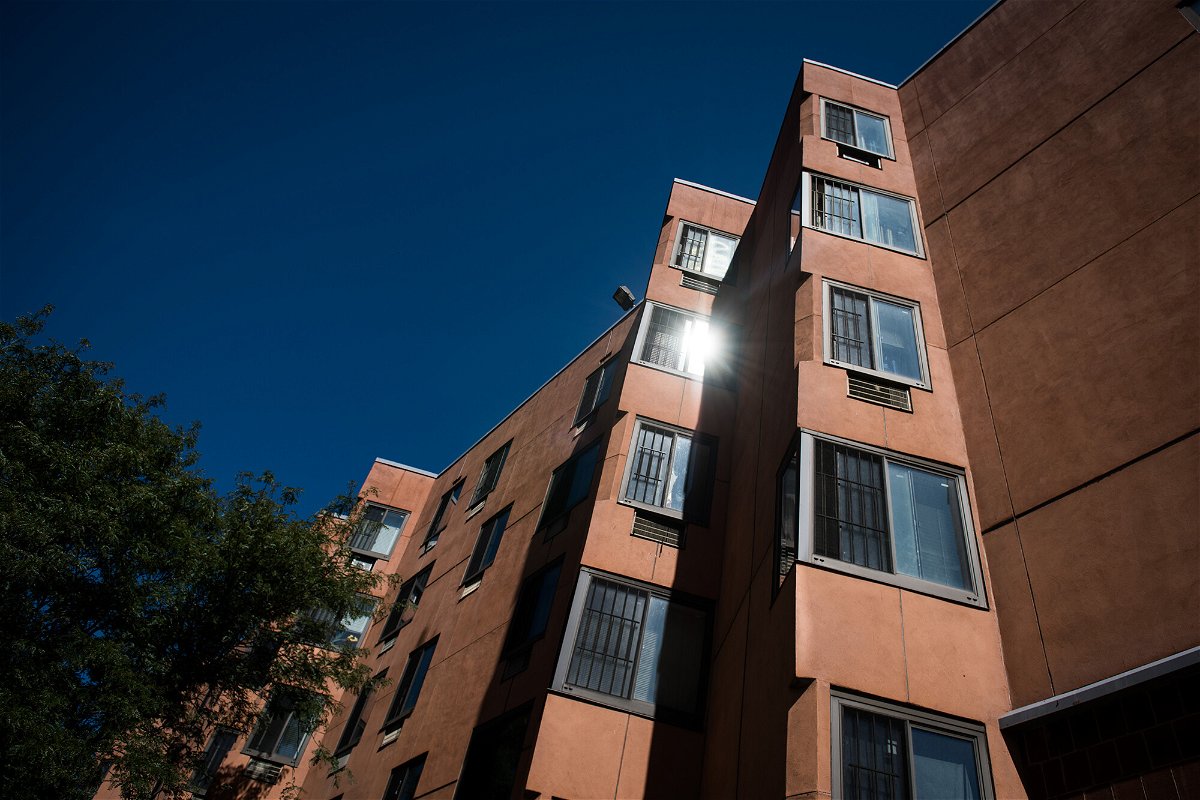Rent relief helped prevent more than one million evictions in 2021

By Anna Bahney, CNN Business
The federal government’s emergency rental assistance program helped prevent more than one million evictions last year.
An estimated 1.36 million renters avoided an eviction filing in 2021 as a result of the government’s unprecedented $46.5 billion rent relief program and other protections, according to a recent analysis by Princeton University’s Eviction Lab published earlier this month.
Treasury officials reported Wednesday that $30 billion in emergency rent relief was spent or obligated by the end of February. Despite a slow and confusing initial roll out of the program last spring, more than 4.7 million payments were made to households since January 2021.
Treasury expects the remainder of the funds to be exhausted by the middle of this year.
Impact of the assistance
A national eviction ban was put in place in September 2020. While it did not stop all evictions, it significantly slowed the tide of eviction filings until the emergency aid could reach struggling renters and their landlords, White House and Department of Treasury officials said.
“We knew from the start that we faced a race with time to get the emergency rental assistance flowing to a significant degree by the time the national eviction moratorium was lifted,” said Gene Sperling, the White House American Rescue Plan coordinator. “We largely won that race.”
In the six states and 31 cities tracked by the Eviction Lab researchers, eviction filings fell sharply at the onset of the pandemic, but then increased in the later months of 2020 even with the ban in place. Given the increased number of renters experiencing economic hardship as the pandemic continued into 2021, experts worried about a “tsunami” of evictions and anticipated the number of filings to skyrocket above levels seen in 2019.
But the opposite happened. In a typical year, roughly 865,000 eviction cases were filed in the areas the Eviction Lab tracks. In 2021, roughly half as many evictions were filed, with 434,304 cases.
Evictions fell in all but one of the 31 cities tracked in 2021. The outlier was Las Vegas, where jobs in tourism evaporated, adversely impacting the large number of renters in the city’s service sector, according to the report. New York City had the biggest reduction in eviction filings from typical levels, with the report estimating nearly 184,000 eviction cases were avoided in New York City.
The emergency rental assistance was found to have a strong impact on the low-income and majority-Black neighborhoods that see a disproportionate share of eviction cases. Those areas experienced the largest absolute reduction in eviction filings last year, the Eviction Lab report found.
The report found that in 2021 the most disadvantaged neighborhoods experienced the biggest gains in terms of rental housing stability. But it also found that, among the eviction cases filed, women of color were disproportionately affected.
More than 80% of emergency rental assistance reached the lowest income households, according to the Treasury, with about 40% of all applicants who received assistance self-identifying as Black, and about 20% self-identifying as Latino.
Moving remaining money
The federal emergency rent relief was approved in two rounds of funding. The first, which included $25 billion under the Consolidated Appropriations Act at the end of 2020, and $21.55 billion under the American Rescue Plan Act in March 2021.
Some state and local governments have exhausted allotted funds while others have not distributed everything they have received. As a result, Treasury has been reallocating money to ensure it gets to renters most in need.
Of the $25 billion in the first batch of money, Treasury has already moved $2 billion in underused funds. Beginning in April, funds from the second batch will be reallocated.
This process has “allowed dollars to flow to places with high need,” said Noel Poyo, Treasury Deputy Assistant Secretary for Community Economic Development. “Generally reallocated funds went to higher need areas with more diverse communities.”
He said he expects that trend to continue with the available funds from the second batch of money.
But it is a challenging balance to strike, Poyo said, between getting dollars to places where they are running out of funds and making sure that money is still available in places where assistance may have gotten started more slowly and people remain in need.
Treasury is encouraging state and local governments to use the additional funding to assist more renters and make continued investments in housing stability.
“In just one year, the Emergency Rental Assistance program built a national infrastructure for eviction prevention that never existed before and has helped keep eviction rates well below historic averages throughout the pandemic,” said Poyo.
He also suggested state and local governments build on the network for support they have established and provide services like housing counselors, “that will help families avoid economic scarring long after Covid-19 is in the rearview mirror,” he said.
The-CNN-Wire
™ & © 2022 Cable News Network, Inc., a WarnerMedia Company. All rights reserved.